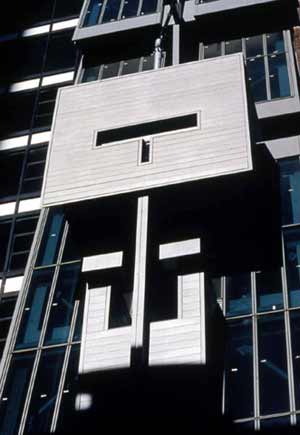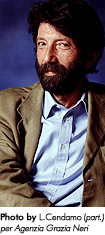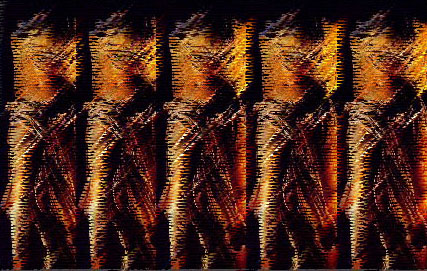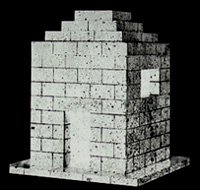
LOOKING AWRY
THE (IR)REAL THING
Sublime Aesthetics(?) = /S/ = (Rhétorique + Esthétique + Poétique) x Polémique = ???? ...

"'I am a realist, but only in the higher sense of the word,' Dostoevskij declared. And an almost identical declaration has been made by the Symbolists, by Italian and Russian Futurists, by German Expressionists, and so on and on." --Roman Jakobson, "On Realism in Art" (1921), Ladislav Matejka and Krystyna Pomorska (eds.), Readings in Russian Poetics: Formalist and Structuralist Views (Chicago: Dalkey Archive, 2002), p. 43
THE PHILOSOPHY OF THE (IR)REAL
Philosophical aesthetics is the creation of sublime and scintillating works of thought (language and ideas) in pursuit of Truth and Beauty. It is in that very pursuit that a unique, putatively ‘perspectival’ space is opened up (as Plato is said to have opened the space of Western metaphysics/philosophy).
It is in this productive capacity of/for nominally ‘useless’ things that a philosophy of the Real is to be found. It is the distance in things (things as always-already existing, existential signs) that the philosophy of the Real registers as the Real/Irreal syrrhesis (the merging of two gazes, apropos of Blanchot and Jean-Luc Marion).
Image (above) - Raimund Abraham, Austrian Cultural Institute (New York)
 In Hegel’s system, this Real is also Spirit. It is the error of reading a mere teleological endgame in Hegel’s Phenomenology of Spirit (History as God’s biography, as Cassirer wrote) that leads to excessive diachronic maneuvers (critical and otherwise), versus identifying that the Real irrupts into Time/Space not by Newtonian vectors but by what Badiou calls the Event -- or what, until Badiou, has been called the eschatological (messianic) ‘Now’.
In Hegel’s system, this Real is also Spirit. It is the error of reading a mere teleological endgame in Hegel’s Phenomenology of Spirit (History as God’s biography, as Cassirer wrote) that leads to excessive diachronic maneuvers (critical and otherwise), versus identifying that the Real irrupts into Time/Space not by Newtonian vectors but by what Badiou calls the Event -- or what, until Badiou, has been called the eschatological (messianic) ‘Now’.The Real resides always-already inside of things (or as Zizek would say, between the ‘too soon’ and the ‘too late’). It is utterly radical in that it is the meeting place of all senses of time (and Time/Space). It is the Lacanian loop-de-loop (the moebius strip of subjectivity), the end as beginning (beginning as end) of Chris Marker’s La Jetée (see Zupancic’s The Shortest Shadow), etcetera, the aesthetic fire in works of conceptual (‘non-objective’) art and architecture, Blanchot’s ‘Outside’ (where literature literally writes itself), and lastly the ne plus ultra opposing all purely instrumentalized and/or totalizing (totalitarian) systems, most especially Capitalism Triumphant.
 The Real is the proverbial Real Thing (Real Presence). It was unearthed by Nietzsche, though he may have forged it as some say Michelangelo forged the Laocoon (that is, he buried it first so that he could later find it out). The Eternal Return is its sublime figural event (the event/catastrophe encountered by the lakeside at Sils-Maria). And, as excavated by Zizek/Zupancic, the Eternal Return is magnificently implicated in the Hegelian negation of negation -- the Yes / Yes that closed (closes) down the No / No (see Zizek’s Interrogating the Real).
The Real is the proverbial Real Thing (Real Presence). It was unearthed by Nietzsche, though he may have forged it as some say Michelangelo forged the Laocoon (that is, he buried it first so that he could later find it out). The Eternal Return is its sublime figural event (the event/catastrophe encountered by the lakeside at Sils-Maria). And, as excavated by Zizek/Zupancic, the Eternal Return is magnificently implicated in the Hegelian negation of negation -- the Yes / Yes that closed (closes) down the No / No (see Zizek’s Interrogating the Real).The Real is the very space of Synthesis (only apparently deferred in Derrida’s circular writings). It is prefigured in Rodchenko’s revolutionary/post-Revolution idea of the ‘non-objective’ and Marion’s phenomenological/post-phenomenological concept of ‘saturated phenomena’. Yet it has always existed, in time, as a surplus affect buried in all things. The ‘Real’ only requires scare quotes insofar as it remains a symptom of the Lacanian barred subject (the neurotic, Cartesian subject); the haunted subject forever circling loss and absence while seeking Self in Other (Subject in Object), and vice versa.
GK (06/19/05)
 POSTSCRIPT - As with Dante, all things that exist in the Real are potential signs. This remains true, even when it appears otherwise (false and/or relative). This existing in the Real provides (restores) depth (and/or aura), or places/situates within things perspectival (anamorphic) space itself (what Jean-Luc Marion calls ‘distance’ and what Zizek calls the ‘anamorphic stain/parallax’ within subjectivity). Within this ‘space within space’ worlds are to be found (including ‘new’ and ‘better’ worlds). Within this Night of the World resides the Real (or, as the German Romantics called it, Self). Inscribed in the Night of the World (a ‘Night’ always offered as antidote to the ‘Day’ of the Enlightenment) is Idealism Itself; that is to say, the ultimate ghost in the machine.
POSTSCRIPT - As with Dante, all things that exist in the Real are potential signs. This remains true, even when it appears otherwise (false and/or relative). This existing in the Real provides (restores) depth (and/or aura), or places/situates within things perspectival (anamorphic) space itself (what Jean-Luc Marion calls ‘distance’ and what Zizek calls the ‘anamorphic stain/parallax’ within subjectivity). Within this ‘space within space’ worlds are to be found (including ‘new’ and ‘better’ worlds). Within this Night of the World resides the Real (or, as the German Romantics called it, Self). Inscribed in the Night of the World (a ‘Night’ always offered as antidote to the ‘Day’ of the Enlightenment) is Idealism Itself; that is to say, the ultimate ghost in the machine.MERE FORM? - “But what might an aesthetical suprasensible be? The sensus communis, if we take sensus in the sense of feeling, cannot and must not be mediated by a concept. There, in aesthetics, the pure faculty of judgment, the capacity of bringing together the manifold [chaos] without having the rule (concept) nor the law (Idea) of that bringing together -- this is the definition of reflexity -- must operate without any additions, within the modesty of an immediate synthesis, the form, that makes the subjective synthesis, the feeling, immediately. In other words, reason in the broad sense, the theoretical faculty of intellectio, the practical faculty of acta, has no interest in it.” (p. 223) / “For through this principle, on principle, aesthetics is not susceptible to any interest. Reason, be it popular, practical, or theoretical, can find no advantage in it. Of course this is because it does not obey the impulse, which drives the concept, to extend the register of the domain of application [‘upwards’]. Because this feeling is not in the service of any concept, is not even subject to that kind of conceivable time that is the schema. In the pleasure of the beautiful, feeling is enough, absolutely enough. It announces nothing further. Is of no use to anything. A go-between in the process of coming and going, transmitting no message. Being the message. A pure movement that compares, that afterward we put under house-arrest in a seat called sensus. But this house-arrest is itself only analogical. One that we project on an object when we call it beautiful. But the object is merely an occasion. It is still impossible to capture in a name the capacity for reflection by and for itself, and the objectivity of beauty is still impossible to establish.” (p. 223-224) / “The essential is this: the sentiment of the beautiful is the subject just being born, the first pairing off of incomparable powers. This feeling escapes being mastered by concept and will. It extends itself underneath and beyond their intrigues and their closure. This is what Kant understands by the ‘natural substratum’ that he takes, deductively, as his beginning. Thus it is a region of resistance to institutions and establishments where there is inscribed and hidden that which happens ‘before’ we know what it is and before we want to make it into anything at all. This pleasure is an inscription without support, and without a code by which it can be read off. Miserable [poor in intuition/concept], if you like. It is the task of literatures and arts, the task of what is called writing, to reinscribe it according to its misery, without overwhelming it, and without getting rid of it.” (p. 235) --Jean-François Lyotard, “Sensus Communis: The Subject in statu nascendi”, Eduardo Cadava, Peter Connor, Jean-Luc Nancy (eds.), Who Comes After the Subject? (London: Routledge, 1991), pp. 217-235
TIME-SPACE - “Psychic space should not be imagined as a solitary confinement […] Initially this is the space of the play between the child and the mother. Cultural experience is to be located there, and it begins with creative living first manifested in play. Culture has the potential of becoming a space for individual play and creativity, and not merely an oppressive homogenizing force; far from limiting individual play, it guarantees it space. Culture is not foreign to human nature but integral to it; after all, culture provides a context where relationships do not always develop by continuity but by contiguity. Perhaps what is most missed during historical cataclysms and exile is not the past and the homeland exactly, but rather this potential space of cultural experience that one has shared with one’s friends and compatriots that is based neither on nation nor religion but on elective affinities.” --Svetlana Boym, “Reflective Nostalgia”, The Future of Nostalgia (New York: Basic Books, 2001), p. 53

FLASH FORWARD - "The power of Spirit is only as great as its expression [extension], its depth only as deep as it dares to spread out and lose itself in its exposition […] Spirit is indeed never at rest but always engaged in moving forward […] Spirit in its formation matures slowly and quietly into its new shape, dissolving bit by bit the structure of its previous world, whose tottering state is only hinted at by isolated symptoms. The frivolity and boredom which unsettle the established order, the vague foreboding of something unknown, these are the heralds of approaching change. The gradual crumbling that left unaltered the face of the whole is cut short by a sunburst which, in one flash, illuminates the features of the new world." G W F Hegel, "Preface", Phenomenology of Spirit, trans. A V Miller (Oxford: Clarendon Press, 1977), pp. 6-7 / "Becoming, History, is a conscious, self-mediating process -- Spirit emptied out into Time […] This Becoming presents a slow-moving succession of Spirits […] The realm of Spirits which is formed in this way in the outer world constitutes a succession in Time in which one Spirit relieved another of its charge and each took over the empire of the world from its predecessor. Their goal is the revelation of the depth of Spirit, and this is the absolute Notion. This revelation is, therefore, the raising-up of its depth, or its extension, the negativity of this withdrawn ‘I’, a negativity which is its externalization or its substance; and this revelation is also the Notion’s Time, in that this externalization is in its own self externalized, and just as it is in its extension, so it is equally in its depth, in the Self. The goal, Absolute Knowing, or Spirit that knows itself as Spirit, has for its path the recollection of the Spirits as they are in themselves and as they accomplish the organization of their realm." ("Absolute Knowing", p. 493)
THE CALL - “After the subject, even beyond Dasein [radical subjectivity itself], emerges the one who knows how to hear Being’s claim.” (p. 242) / “This heroic reversal is marked, among other innovations, by the disqualification of Dasein’s autarky [autonomy]; since anticipatory resoluteness, as the self’s appeal to itself, runs aground on ontological neutrality, it must submit to an appeal that it neither performs, nor controls, nor decides: […] the appeal by which Being claims Dasein as the phenomenological agency of its manifestation […]” (p. 241) / “Being is disclosed to Dasein only as a possibility reserved for the one who engages himself by naming himself as an irreplaceable first person [a time-in-itself].” (p. 237) / “Dasein fails to constitute an object, but exposes itself to manipulation […] Dasein has no substantiality, but arrives at its own Being only by taking the risk of exposure in person.” (pp. 237-238) --Jean-Luc Marion, “L’Interloqué”, Eduardo Cadava, Peter Connor, Jean-Luc Nancy (eds.), Who Comes After the Subject? (London: Routledge, 1991), pp. 236-245
AND YET - "Aesthetic programs for a radical reduction of means and effects in art -- including the ultimate demand, for the renunciation of art itself -- can't be taken at face value, undialectically. These are neither consistent policies for artists nor merely hostile gestures aimed at audiences. Silence and allied ideas (like emptiness, reduction, the 'zero degree') are boundary notions with a complex set of uses; leading terms of a particular spiritual and cultural rhetoric." --Susan Sontag, "The Aesthetics of Silence", Aspen 5/6 (1967), "The Minimalism Issue" (Archived by Ubu Web) ...
SINGULARITIES - “In contemporary architecture, the poetics of de-materialization play on surface mystery, uncertainty of perception, ambiguity and illusion to convey the ‘aesthetics of virtual reality’ that Jean Nouvel spoke of with regard to his Fondation Cartier, where tall dark glass panels reflect and multiply images and layers. Matter is thus not so much a means of defining the limits of the building as of liberating perception, introducing vibration and a host of changing and fragile readings, opening the way to the invisible and to emotion. In this ‘aesthetics of the miracle’ as described by the architect, mystery remains entire, the result is present but we are not aware of the means to achieve it, our emotion derives from perception of a building ‘set free’, which offers itself to our regard like an object, an inhabited painting.” Salwa & Selma Mirou, “Oraisons modernes”, L’Architecture d’Aujourd’hui 356 (January-February 2005), p. 53 / Pour Nouvel & Baudrillard's Les objets singuliers: Architecture et philosophie (Paris: Editions Calmann-Lévy, 2000), cliquez ici ... Published in English as Singular Objects of Architecture (Minneapolis: University of Minnesota Press, 2002) / Singularité et complexité (Felix Guattari Séminaire, 1985)
Torsten Schmiedeknecht (Editor), Andrew Peckham (Co-Editor), Charles Rattray (Co-Editor), Rationalist Traces (London: Academy, 2007) - Paper, 128 pages, ISBN 978-0-470-02837-7 - "An influential strand of European architecture is characterised by a strong undercurrent of rationalist thought. This has emerged diversely in different countries, contributing to an impressive body of projects that remain principally concerned with rational order and hierarchy as a design premise. This title brings together outstanding architectural work, which demonstrates different approaches towards rationality in architecture; revealing traces of inter-war rationalism and post-war Neo-rationalism (of the 1960s and 70s) evident in individual projects. These may be found in patterns of thinking, a particular formal repertoire forms or consistency, or simply in the singularity of particular buildings, constituting different types of architectures of Rationalism." (Academy)
 POSTSCR(Y)PT
POSTSCR(Y)PTImage (right) - Adolf Loos, "Tomb for Arnold Hauser" (Sketch / inverted image)

